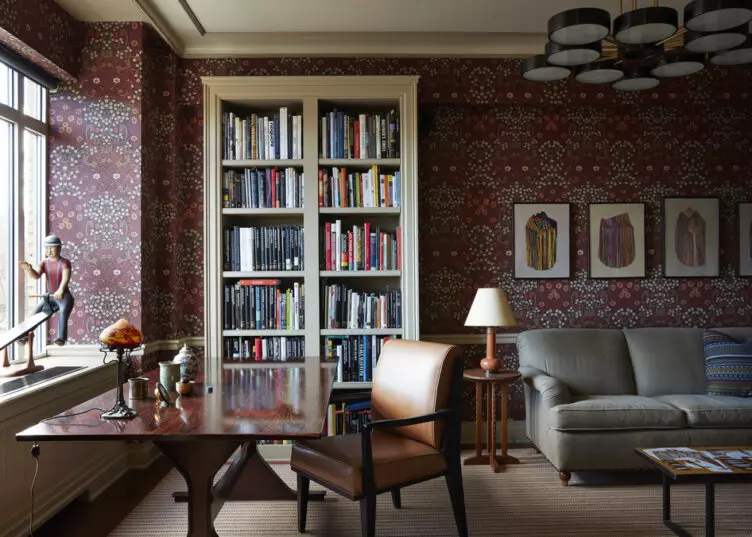Cocobolo desks are not just your ordinary desks. They are highly sought-after pieces of furniture made from rare Central American cocobolo wood. This wood is revered by collectors for its extraordinary, colorful, streaked wood grain. While mostly brown in color, it also exhibits accents of yellow, red, purple, and even black. Designers particularly love cocobolo wood for its high sheen, which mimics the look of lacquer. The unique visual characteristics and limited availability of cocobolo wood have made it one of the most expensive woods in the world, comparable to other exotic options like rosewood.
The Appeal of Cocobolo Wood
So, what exactly is cocobolo wood? Also known as Mexican rosewood or Central American rosewood, cocobolo wood is native to the region spanning from Mexico to Panama. It is considered a true rosewood and is renowned for its density, second only to African Blackwood. Artisans are captivated by cocobolo's workability, making it a popular choice for furniture design. In addition, its excellent sound-bouncing and absorption properties have made it a preferred material among string instrument makers.
Cocobolo wood is celebrated for its rich multi-hued coloring. Immediately after cutting, the wood displays a vibrant swirling pattern of rainbow-colored lines. Over time, these colors mellow and darken, resulting in a deep, even hue. Another notable characteristic of cocobolo wood is its assertively floral scent.
Rarity and Controversy
Cocobolo furniture is considered rare due to several factors. Firstly, cocobolo trees only grow in a specific region of the world, which limits the supply of the wood. Additionally, the controversy surrounding the potential toxicity of cocobolo wood has deterred many craftspeople from working with it. The dust produced when working with cocobolo wood can be hazardous to health if inhaled, leading to concerns about its safety. Despite these challenges, cocobolo furniture remains highly sought-after.
Furthermore, the status of the cocobolo tree as a "vulnerable" species, according to The International Union for Conservation of Nature (IUCN), has led to strict monitoring of the Cocobolo trade by various governments. These efforts aim to ensure the survival of the tree species and protect its natural habitat.
The Legacy of Don S. Shoemaker
Numerous designers have worked with cocobolo wood, but one of the most famous is Don S. Shoemaker. Born in Nebraska, Shoemaker developed his design skills at the Art Institute of Chicago before falling in love with Mexico during his honeymoon. He eventually settled in Mexico, where he established Señal S.A., a furniture manufacturing company. Shoemaker's company produced a wide range of furniture, from chairs and desks to cheeseboards and salt and pepper shakers. Mexican rosewood, including cocobolo wood, was their primary material.
One of Shoemaker's most iconic pieces is the Cocobolo "Diamond Line Desk." This unique desk features a half-octagonal-shaped top inlaid with a diamond pattern and chevron-shaped legs. Its distinctive design and limited production, with only 25 desks ever made, have elevated its desirability.
More Mid-Century Modern Rosewood Designs
If you're inspired by the allure of cocobolo wood but not ready to invest in a high-end piece, there are other options for indulging in the beauty of rosewood. Danish Modernist designers, such as Erik Buch, Johannes Andersen, Kai Kristiansen, and Niels Koefoed, have also worked extensively with rosewood. Their designs offer a variety of furniture pieces that allow you to embrace the elegance of rosewood.
For those looking for an iconic piece, consider an Eames Lounger with a rosewood shell. The original Eames Lounger, introduced in 1956, featured a shell made from five layers of Brazilian rosewood. Since an embargo was placed on Brazilian rosewood in 1992, the production of these chairs temporarily ceased, making them even more valuable and rare.
Other American Mid-Century Modern designers, including Florence Knoll, Edward Wormley, and Harvey Probber, have also incorporated rosewood into their designs. If you're budget-conscious, the Kent Coffey "Perspecta" line is worth exploring. While primarily crafted from walnut, several Perspecta pieces feature sleek rosewood pulls, adding a touch of sophistication to these affordably priced furniture items.
Cocobolo desks are not just pieces of furniture; they are works of art. Their rarity, beauty, and historical significance make them highly prized by collectors and enthusiasts alike. Whether you choose an authentic cocobolo desk or explore other rosewood options, these pieces bring elegance and timeless style to any space.
 Photo by Stephen Kent Johnson / OTTO / Designed by Shawn Henderson
Photo by Stephen Kent Johnson / OTTO / Designed by Shawn Henderson

















